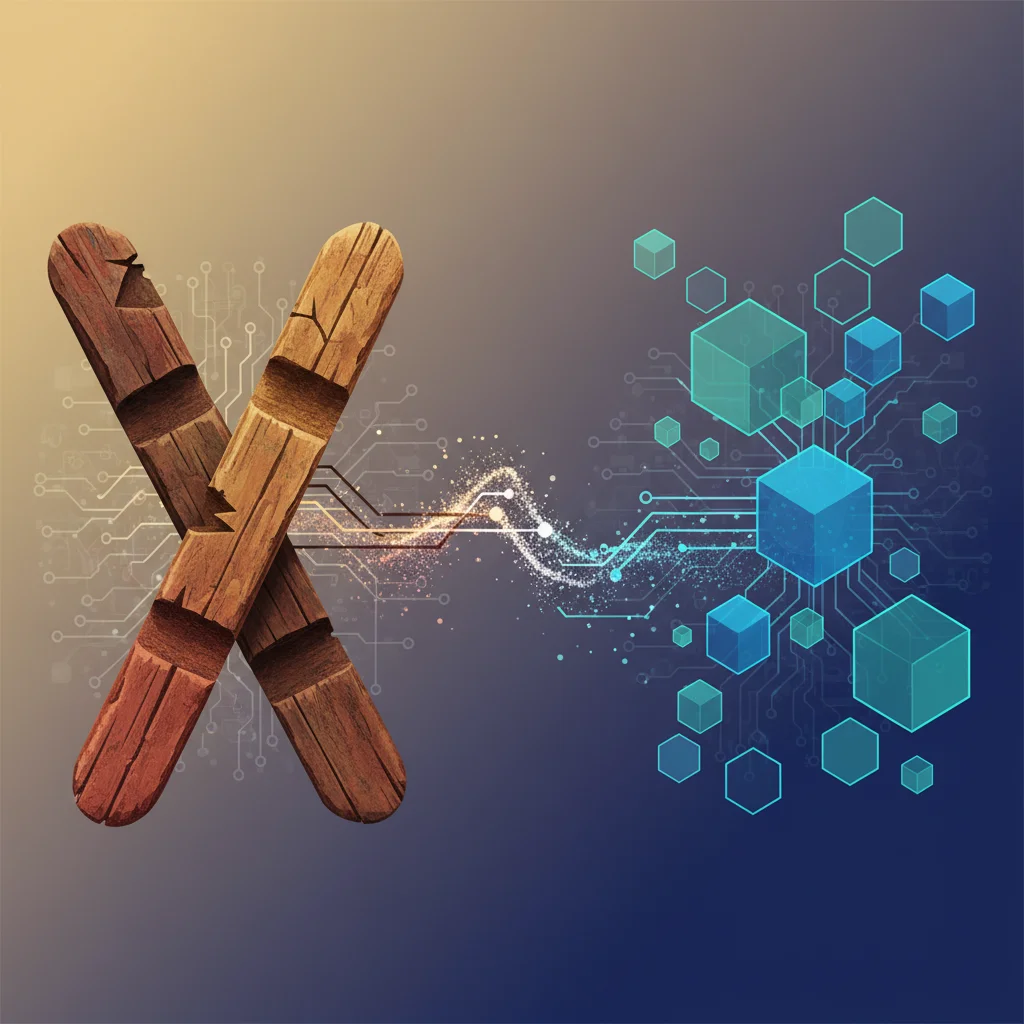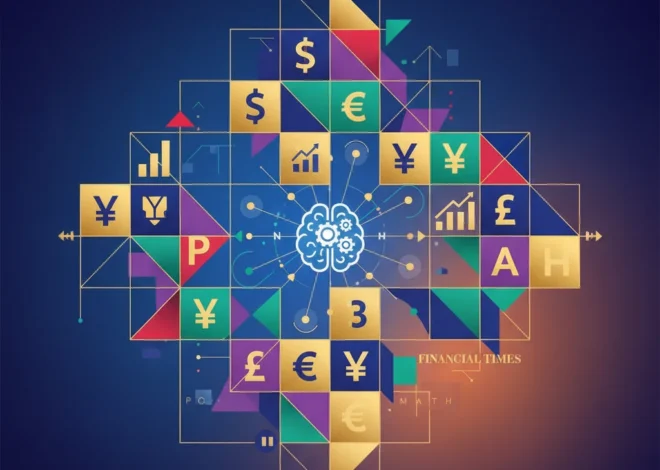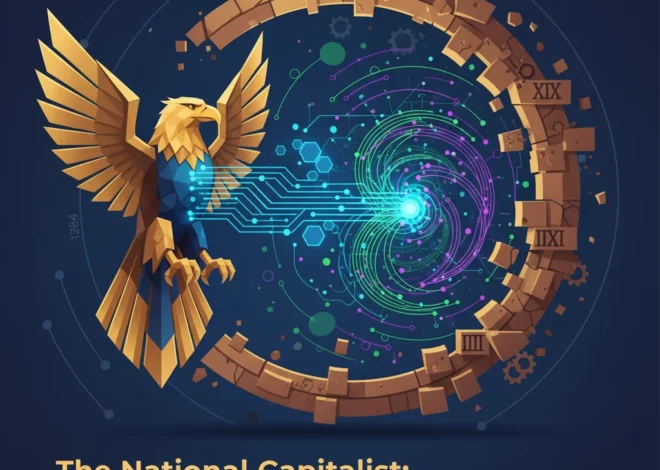
Blockchain’s 700-Year-Old Ancestor: How Medieval Tally Sticks Predicted Modern Fintech
In the fast-paced world of financial technology, terms like “tokenization,” “blockchain,” and “decentralized finance” are heralded as revolutionary concepts poised to reshape the global economy. We are told that these innovations are fundamentally new, a digital paradigm shift that breaks entirely from the past. But what if the core idea behind one of fintech’s most promising frontiers is not new at all? What if it’s a concept that’s, quite literally, as old as the hills?
In a thought-provoking letter to the Financial Times, Marke Raines of MAJOR SecReg (Publishing) made a striking observation. He argued that the much-hyped concept of tokenization—representing a real-world asset as a unique digital token—bears an uncanny resemblance to a system that governed English finance for over 700 years: the tally stick.
This post delves into that fascinating parallel. We’ll journey back to medieval England to understand this ancient financial tool, compare it directly with today’s cutting-edge blockchain technology, and explore what this historical echo teaches us about the true nature of innovation in finance and investing.
The Modern Marvel: Understanding Asset Tokenization
Before we travel back in time, let’s clarify what we’re talking about in the 21st century. Tokenization is the process of converting rights to an asset into a digital token on a blockchain. This asset can be anything from a piece of real estate or a fine art painting to a share of a company or a bond.
The promise of this fintech innovation is immense. Proponents argue it can:
- Democratize Investing: By allowing for fractional ownership, tokenization can enable small investors to buy a piece of a high-value asset, like a commercial building, that was previously only accessible to institutional players.
- Increase Liquidity: Illiquid assets, such as private equity or fine art, can be traded more easily and quickly on a secondary market, unlocking trillions of dollars in value. Boston Consulting Group projects the tokenization market could reach $16 trillion by 2030.
- Enhance Transparency and Security: Because transactions are recorded on an immutable blockchain ledger, ownership and transaction history are transparent and difficult to tamper with.
- Improve Efficiency: Smart contracts can automate complex processes like dividend payments or compliance checks, reducing the need for intermediaries in banking and trading, thereby lowering costs and settlement times.
This technology is at the heart of the evolution of the stock market and the broader financial landscape. But the fundamental idea—creating a unique, verifiable, and transferable representation of value—is not a product of the digital age.
Trump's Argentina Ultimatum: How One Election Could Reshape Global Finance and Investment
An Ancient Ledger: The Ingenious Tally Stick System
Imagine a financial system that ran not on silicon chips, but on hazelwood sticks. Welcome to medieval England. The tally stick was a form of currency and record-keeping used by the English Exchequer from the reign of King Henry I in the 12th century until it was formally abolished in 1826.
Its brilliance lay in its simplicity and security. Here’s how it worked:
- A debt or obligation was recorded by carving notches into a stick. The size of the notch represented the amount of money.
- The stick was then split lengthwise down the middle. One half, called the “stock,” was given to the creditor (the one who lent the money or was owed a service). This is the origin of the term “stockholder.”
- The other half, called the “foil” or “counter-foil,” was kept by the debtor (often the Crown, as a record of future tax revenue).
The two halves were unique, like a physical key. The notches and the grain of the wood had to match perfectly to prove the debt was legitimate, making it an incredibly effective anti-fraud device. As historian and anthropologist David Graeber noted in his book Debt: The First 5,000 Years, these sticks became a widespread medium of exchange. A person who was owed money by the king could use their “stock” to pay for goods, settle their own debts, or pay their taxes. In essence, the tally stick was a transferable, asset-backed instrument representing a claim on future value—a primitive, physical token.
Parallel Worlds: Comparing Tally Sticks and Blockchain Tokens
The connection drawn by Marke Raines becomes crystal clear when we place the two systems side-by-side. Both are essentially mechanisms for creating unique, verifiable claims on an underlying asset or value.
This table breaks down the direct comparison:
| Feature | The Tally Stick System (c. 1100-1826) | Modern Tokenization (Blockchain) |
|---|---|---|
| Medium | A notched and split piece of wood (e.g., hazelwood). | A unique digital entry on a distributed ledger. |
| Proof of Authenticity | Matching the unique grain and notches of the “stock” and “foil.” | Cryptographic verification (public/private keys) and consensus algorithms. |
| Record of Ownership | Physical possession of the “stock” half of the stick. | An entry in a wallet address on the blockchain. |
| Transferability | Physically handed from one person to another to settle debts. | Digitally transferred between wallets, often on a global scale in seconds. |
| Issuer | Primarily the English Crown (a central authority). | Can be anyone—a corporation, a government, or an individual (centralized or decentralized). |
| Underlying “Asset” | A debt owed by the Crown (a claim on future tax revenue). | Virtually anything: real estate, art, equity, intellectual property. |
The core function is identical: to create a scarce, difficult-to-forge representation of value that can be securely held and transferred. The tally stick was, in effect, a physical, “off-chain” token representing a future claim.
Beyond the Cap and Gown: Why the UK Graduate Hiring Slump is a Red Flag for the Economy
Beyond the Parallel: What Makes Digital Tokenization Truly Different?
While the historical parallel is compelling, it’s crucial to acknowledge that it isn’t a perfect one-to-one match. The differences are what make modern tokenization a potentially transformative force for the entire financial system.
1. Scale, Speed, and Geography: Tally sticks operated at the speed of horse and ship. Their use was largely confined to England. Blockchain tokens operate at the speed of light on a global, borderless network. This difference in scale creates opportunities for global liquidity pools that were unimaginable in the past.
2. Decentralization vs. Centralization: The tally stick system was fundamentally centralized. Its value and legitimacy were derived from a single authority: the Crown. While many modern tokenization projects are also issued by central entities, the underlying blockchain technology allows for true decentralization. This means the ledger is maintained not by one bank or government, but by a distributed network of computers, making it more resilient to censorship or control by a single party, a concept explored in-depth by institutions like the International Monetary Fund.
3. Programmability and Automation: This is perhaps the most significant differentiator. A tally stick is a static object; it represents a debt and nothing more. A digital token can be embedded with “smart contracts”—self-executing code that automates complex actions. A token representing a rental property could automatically distribute monthly rental income to all token holders. A stock token could automate dividend payments and shareholder voting without the need for traditional intermediaries. This programmability unlocks a universe of new financial products and services.
4. Divisibility and Accessibility: You can’t easily saw a tally stick into a thousand pieces to distribute ownership. A digital token, however, is infinitely divisible. This fractionalization is what truly democratizes access to high-value assets, allowing for micro-investing on a massive scale.
The Point of No Return: Why Climate Tipping Points Are Reshaping Global Finance and Investing
Lessons for Today’s Innovators and Investors
Recognizing the tally stick as a conceptual ancestor to tokenization offers more than just a fun historical fact. It provides timeless lessons for navigating the hype of modern financial technology.
- Innovation is often recombination: Truly novel ideas are rare. Most innovation involves applying new technology to solve age-old problems. The problem of creating trusted, transferable value has been with us for millennia. Understanding this can help us see past the jargon and evaluate a new technology based on the fundamental problem it solves.
- Focus on utility over novelty: The tally stick endured for centuries not because it was technologically advanced, but because it was incredibly useful, secure, and solved a critical problem for the English economy. The long-term success of blockchain and tokenization will similarly depend on their ability to provide real, tangible utility beyond speculation.
- Trust is the ultimate currency: Whether the mechanism is a split piece of wood or a complex cryptographic algorithm, the goal is the same: to create a system of trust. Any new financial system must be able to prove its reliability, security, and integrity to gain widespread adoption. As the Bank of England itself has noted, new forms of digital money must meet the same standards of trust as traditional forms.
Conclusion: The More Things Change…
The journey from a notched hazelwood stick to a digital token on a global blockchain is a testament to human ingenuity. While the technology has evolved from the physical to the digital, from the local to the global, the underlying principle remains remarkably consistent. Marke Raines’s observation was astute: the core concept of tokenization is indeed an innovation as old as the hills.
This doesn’t diminish the revolutionary potential of blockchain. On the contrary, it grounds it in a long history of human efforts to create better systems for representing and exchanging value. By understanding that we are solving ancient problems with modern tools, we can better appreciate what is truly new—programmability, decentralization, and global scale—and build a future of finance that is more efficient, accessible, and transparent for everyone.


